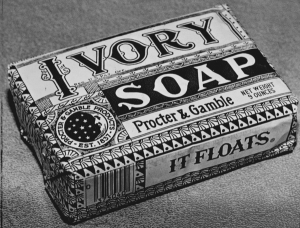How It All Began – print advertising gains traction
Now that print advertising was gaining traction government agencies began regulating the print industry. Advertising agencies were opening throughout cities offering their expertise in marketing a wide range of products and services. Advertisers had a long way to go to convince America’s businesses that they needed to advertise. In April 1873 the first advertiser’s convention was held in New York City. Agency leaders assembled to discuss foreseen issues in the current print advertising industry. Interestingly some of those same issues still exist in the industry. The relationship between printers and advertising agents was more clearly defined and neither party could intentionally hurt the other both financially or by reputation defamation. With government regulation and government agencies gearing up, so did government taxes. Quickly the government realized the revenue stream available to an industry that would forever change American small business.
The Industrial Revolution was in full swing and businesses were scrambling to find the best method to reach their consumers, wholesalers, and retailers. Businesses could no longer advertise to just the wealthy or financially sound consumer. Competition was becoming aggressive so businesses had to widen their target audience and thus the household product marketing was launched to reach all income levels.
Why would P&G pay $11,000 to market one product in the 1800s?
Procter & Gamble began their advertising campaign for their Ivory Soap with a substantial $11,000 budget. “It revolutionized the world of branding, marketing and advertising, with pioneering methods that are still used today.” Amongst several pieces to the P&G marketing effort was the product packaging for their multipurpose soap. Soap sells first began by cutting blocks of the soap off a larger block, wrapping it in brown paper, and handing it directly to the consumer.  Now that printing on paper was a necessity and becoming common practice, P&G took a gamble and printed a simple design on white paper and began packing their product for mass usage. The majority of the $11,000 was spent on product packaging. The gamble paid off.
Now that printing on paper was a necessity and becoming common practice, P&G took a gamble and printed a simple design on white paper and began packing their product for mass usage. The majority of the $11,000 was spent on product packaging. The gamble paid off.
Typography becomes important
Although newspapers were filled with advertisements for everything from political views to a local farmer selling his goods or livestock; businesses continued plastering posters on buildings and fences to ensure they found their customers. As print advertising gained popularity newspaper advertising space became limited so marketers learned quickly how to pack their ads with repetitious phrases and names. In order to set businesses apart from the competition and maximize print advertising typeface became an important feature. A business had to look different to catch the buyer’s attention. We began learning how layout and typeface changes the minds of the reader.
Subsequent to the Federal Trade Act’s passing in 1914, advertising became a tool for businesses to reach its consumers in more than one method. Print advertising gained speed through the 1900s and quickly spread to radio and thereafter television media. This began the marketing process of interlinking print advertising with electronic advertising.
